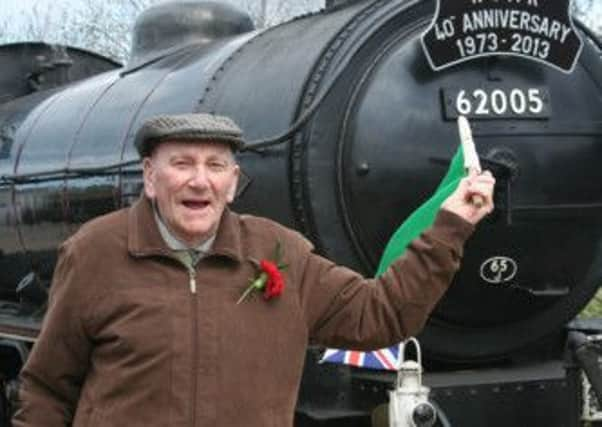Charlie Hart


Mr Hart took on the role of fundraising officer, for which he was temperamentally very well suited, and when the North York Moors Railways Trust was licensed to run a passenger service in 1967 he was responsible for operating the trains, his formal title, following railway tradition, being “head of operating”.
Mr Hart was born in Scarborough, and his parents Leonard and Lydia then had a daughter and another son.
Advertisement
Hide AdAdvertisement
Hide AdHe was still young when their father died of TB contracted while fighting in the Great War, and for a while times were hard; a nearby factory had a discard heap containing a few bits of unburnt coal which the children scrounged and brought home in a barrow.
Their mother married again, and the family now settled in York, Mr Hart became an apprentice electrician.
At the outbreak of the Second World War, he got a job with LNER as a book boy at York Yard South signal box, his job being to keep a record of all the day’s movements.
In York he met Marjorie Larcum on the top of a double decker bus, the beginning of a relationship which brought them to Huntington Parish Church in 1946 to be married.
Advertisement
Hide AdAdvertisement
Hide AdThe next step in his career took him to Coxwold signal box, bringing him the status and responsibilities of signalman. He lodged in the village during the week, his wife remaining in York where she worked in a munitions factory until the chemicals she handled affected her health – as they did many other munition workers – and she then got a job at Elvington airfield, catering for the RAF flight crews.
Six months after the birth of their son Anthony in 1947, Mr Hart moved to Ruswarp signal box south of Whitby on the Whitby-Pickering line. Here he first met Tom Salmon, a friendship that was to prove immensely important in the development of the North York Moors Railway.
The family now in Grosmont, Mr Hart had a very hilly six-mile bicycle ride to and from his work every day until he was able to move to Ruswarp itself.
Mrs Hart got a job as crossing keeper, and in their front garden, beside the railway line, was a swivelling board mounted on a post, its sides painted red. If ever there were an occasion when an approaching engine driver needed to be warned that a vehicle was on the crossing, she was to turn the board so the red on one side or the other could be seen by him, and he would know to stop.
Advertisement
Hide AdAdvertisement
Hide AdMr Hart’s next job was as signalman at Sleights, and when the signal box there was closed in the mid 1980s, he moved to Whitby, and when that signal box closed, he got a job in the station car park. The loss of status did not concern him because he was close to retirement, and was anyway heavily involved in running the North York Moors Railway.
In Mr Hart, it had a singularly determined and dedicated fund raising officer; he poured his powers of persuasion into the railway project, and the initial 200 Club of supporters became the 900 Club.
When his wife began to go blind and he had to look after her, his involvement was necessarily restricted to when their son could take over her care, but he made the most of every visit, greeting passengers and travelling up and down the line selling Guide Lines, the NYMR’s guide book.
After the last run of afternoon services on a Friday, he and the other volunteers would often pop along to a nearby bakery, returning with cream cakes to have with their tea on board the train – remembered by those who had them as a highlight of the week.
Advertisement
Hide AdAdvertisement
Hide AdWhen he was 88, he fell at home while washing up and broke his femur and for the first time in his life had to go to hospital.
He was making a good recovery, and was on his feet but while still in hospital he fell again, and the big bone broke once more.
Despite the setback, Mr Hart did walk again, but he was restricted, and in his last years it was his great delight to stand in his garden beside the railway and wave at the passing trains. Such a fixture did he become that he was included in Guide Lines as a sight to look out for.
On May 1 last year, he joined Michael Pitts and the late Tom Salmon for a reunion of the surviving founding members of the NYMR to celebrate the line’s 40th anniversary.
Mr Hart is survived by his son Anthony.